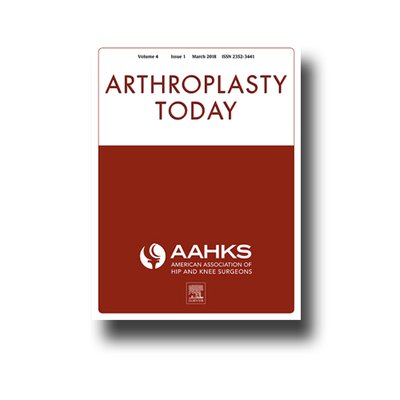
“Background: Legalization of cannabis, along with concern over prescription opiate use, has garnered interest in cannabis for adjuvant pain control. This study examines the relationship between cannabis and opioid consumption after total hip (THA) or knee (TKA) arthroplasty.
Methods: Patients undergoing primary THA or TKA with minimum 6-month follow-up who self-reported cannabis use were retrospectively reviewed. A total of 210 patients (128 TKAs and 82 THAs) were matched by age; gender; type of arthroplasty; Charlson Comorbidity Index; and use of nicotine, antidepressants, or benzodiazepines to patients who did not self-report cannabis use. Patients receiving an opioid prescription after 90 days postoperatively were classified as persistent opioid users (POUs). Duration of opioid use (DOU) was calculated for non-POU patients as the time between surgery and their last opioid prescription. Differences in inpatient morphine milligram equivalents (MMEs), outpatient MMEs, POU, and DOU were analyzed.
Results: Cannabis users required equivalent inpatient and outpatient MMEs. There was no difference in DOU. There was a significant difference in POU between cannabis users and matched controls (1.4% [n = 3] vs 9.5% [n = 20], P < .001, respectively). Grouping patients by TKA or THA, there remained a difference in POU for TKA (1.5% [n = 2] vs 10.9% [n = 14], P = .002) and THA (1.2% [n = 1] vs 7.3% [n = 6], P = .04). There was no difference in inpatient or outpatient MMEs or DOU for THA and TKA patients.
Conclusions: There is a reduced rate of POU in patients who self-report perioperative cannabis use. Prospective studies are needed to clarify the role of cannabis as an adjunct to perioperative pain control.”
https://pubmed.ncbi.nlm.nih.gov/36158462/
“This study helps to shed light on what role if any cannabis should play as a part of an opioid-sparing multimodal pain protocol after TJA. Self-reported perioperative cannabis use appeared to significantly reduce the number of patients that persistently used opioids greater than 90 days after TJA from 9.5% to 1.4%.”
https://www.arthroplastytoday.org/article/S2352-3441(22)00164-9/fulltext
